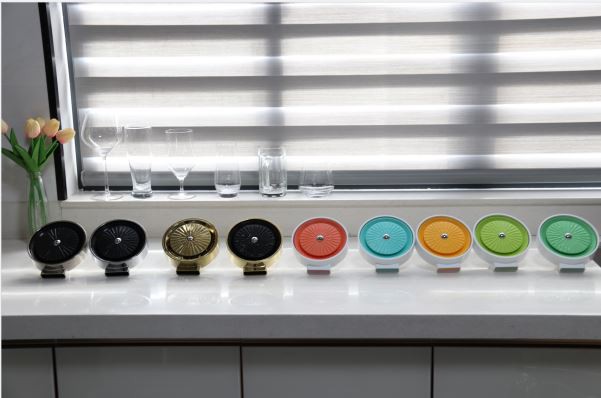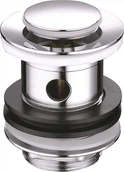In the realm of hardware and industrial components, cup washers play a crucial role. As a dedicated supplier of cup washers, I've had the privilege of delving deep into their various aspects, including one of the most fundamental questions: What is the shape of a cup washer?
The Basic Structure of a Cup Washer
A cup washer, as its name might suggest, has a distinctive shape that combines elements of a traditional flat washer with a cup - like structure. At its core, it is a circular disc, much like a standard washer. This circular base provides a stable surface for distributing load and preventing damage to the surfaces it comes into contact with.
The most prominent feature of a cup washer is the raised, cup - shaped portion. This cup is typically centered on the circular disc. It extends upwards, creating a cavity. The height of the cup can vary depending on the specific application and design requirements. In some cases, the cup may be relatively shallow, while in others, it can be quite deep.
The cup shape serves several important functions. Firstly, it can act as a form of protection. When used in applications where there is a risk of debris or contaminants getting in between the fastener and the surface, the cup can act as a barrier. For example, in outdoor or industrial settings where dust, dirt, or moisture are prevalent, the cup can prevent these elements from reaching the critical connection points.
Secondly, the cup can enhance the load - bearing capacity of the washer. By providing additional material in the vertical direction, it can better withstand axial forces. This is particularly important in applications where the fastener is subjected to significant pulling or pushing forces.
Dimensions and Variations
The dimensions of a cup washer can vary widely. The outer diameter of the circular base can range from a few millimeters to several centimeters, depending on the size of the fastener it is intended to be used with. Smaller cup washers are often used in delicate electronic or precision machinery applications, while larger ones are common in heavy - duty construction and automotive industries.
The inner diameter of the circular base is designed to fit snugly around the fastener, such as a bolt or a screw. A proper fit is essential to ensure that the washer functions effectively. If the inner diameter is too large, the washer may not stay in place, and if it is too small, it may be difficult to install.


The depth of the cup also varies. Some cup washers have a very shallow cup, perhaps only a fraction of a millimeter deep. These are often used in applications where the primary function is to provide a small amount of additional protection or to slightly modify the load - distribution characteristics. On the other hand, deep - cup washers can have a cup depth of several millimeters or more. These are used in applications where maximum protection and load - bearing capacity are required.
In addition to variations in size, there are also different shapes of the cup itself. Some cup washers have a straight - walled cup, where the sides of the cup are perpendicular to the circular base. This design provides a simple and straightforward form of protection and load - bearing. Other cup washers may have a tapered cup, where the sides of the cup slope inwards towards the top. This tapered design can offer some unique advantages, such as better alignment with the fastener and a more gradual distribution of forces.
Materials and Their Impact on Shape
The material used to manufacture a cup washer can also influence its shape. Common materials include metals such as steel, stainless steel, and brass, as well as plastics and rubber.
Steel cup washers are known for their strength and durability. They can maintain their shape even under high loads and in harsh environments. However, they are also prone to corrosion if not properly treated. Stainless steel cup washers, on the other hand, offer excellent corrosion resistance, making them suitable for outdoor and marine applications. The properties of these metals allow for precise manufacturing of the cup shape, with sharp edges and well - defined dimensions.
Brass cup washers are often used in applications where electrical conductivity is required, in addition to mechanical support. Brass is a relatively soft metal, which can make it easier to form into complex cup shapes. However, it may not be as strong as steel or stainless steel, so it is typically used in less demanding applications.
Plastic and rubber cup washers are lightweight and offer good insulation properties. They are often used in electronic and electrical applications. The flexibility of these materials allows for the creation of cup shapes that can conform to irregular surfaces. For example, a rubber cup washer can be compressed to create a tight seal, preventing the passage of liquids or gases.
Applications in Different Industries
The unique shape of cup washers makes them suitable for a wide range of industries. In the construction industry, cup washers are used in structural connections. They can be found in buildings, bridges, and other large - scale structures. The cup shape helps to protect the fasteners from corrosion and ensures that the connections remain stable over time.
In the automotive industry, cup washers are used in various components, such as engine mounts, suspension systems, and body panels. They help to reduce vibration and noise, as well as protect the fasteners from the harsh environment under the hood and on the road.
The electronics industry also makes use of cup washers. In printed circuit boards and other electronic devices, small cup washers can be used to secure components and protect them from damage. The cup shape can prevent solder from flowing onto unwanted areas and can also provide a buffer between the component and the board.
Related Products and Their Links
If you are interested in other related products, we also offer Cup Rinser For Sink, Kitchen Glass Rinser, and Kitchen Sink Glass Rinser. These products are designed to meet the needs of modern kitchens and provide efficient and convenient solutions for cleaning cups and glasses.
Conclusion and Call to Action
Understanding the shape of a cup washer is essential for anyone involved in the design, manufacturing, or use of these components. The unique cup - shaped structure offers a range of benefits, from protection to enhanced load - bearing capacity. Whether you are in the construction, automotive, electronics, or any other industry, cup washers can play a vital role in ensuring the reliability and performance of your products.
If you are in the market for high - quality cup washers or have any questions about their applications, we are here to help. Our team of experts can provide you with detailed information and guidance to meet your specific needs. We invite you to contact us for a consultation and discuss your procurement requirements. We look forward to working with you to find the best cup washer solutions for your projects.
References
- Machinery's Handbook, 31st Edition
- ASME Standards for Fasteners and Washers
- Automotive Engineering Handbook





